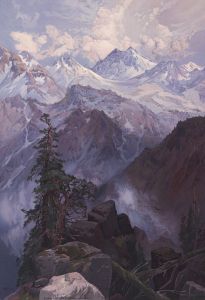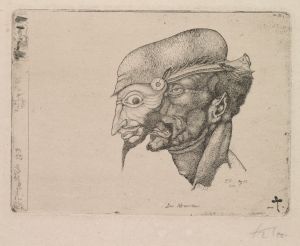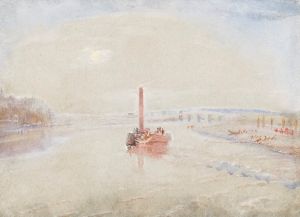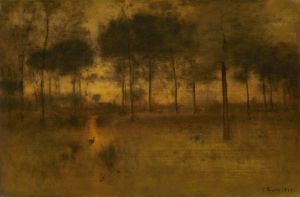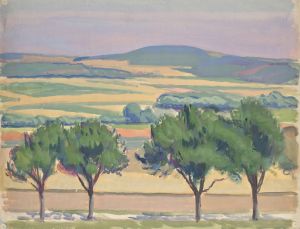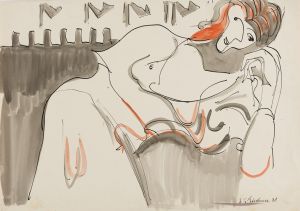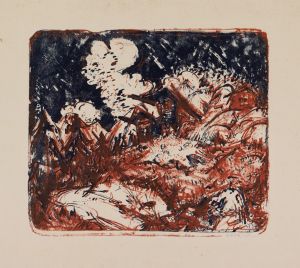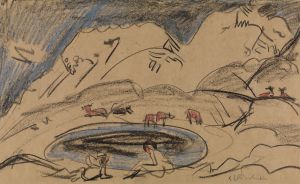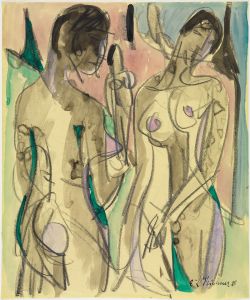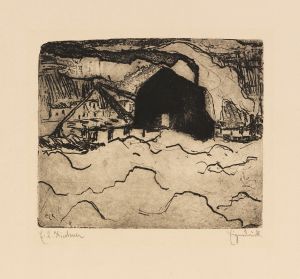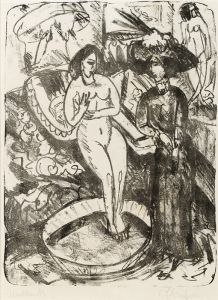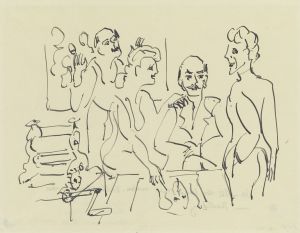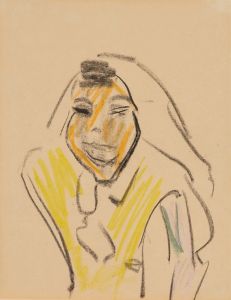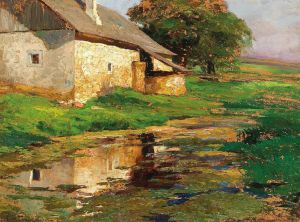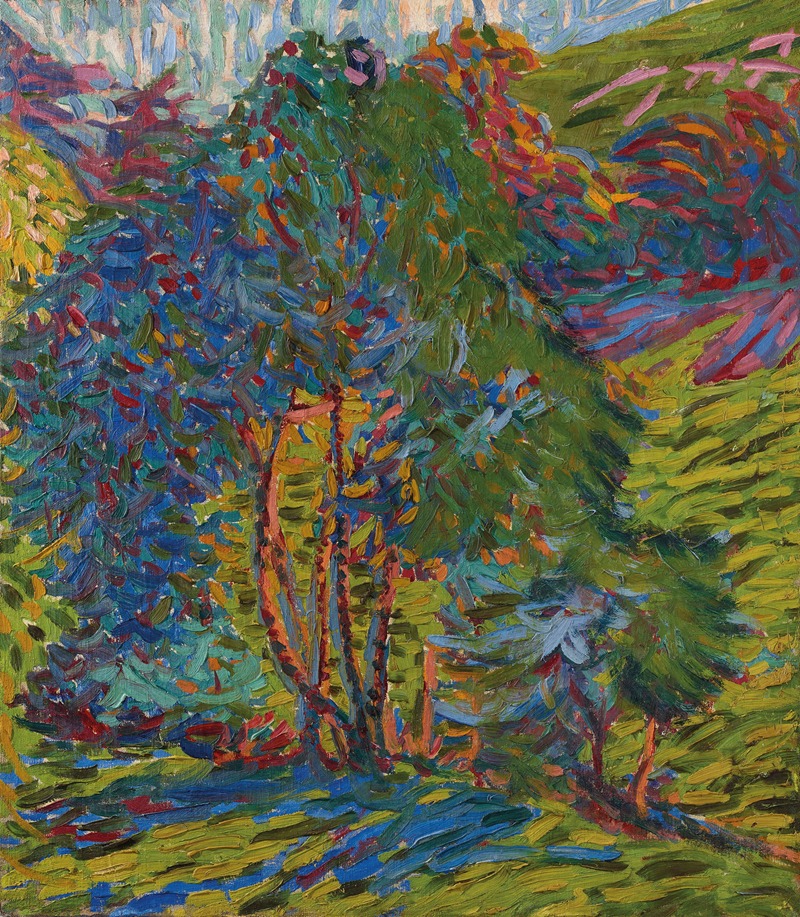
Waldstück
A hand-painted replica of Ernst Ludwig Kirchner’s masterpiece Waldstück, meticulously crafted by professional artists to capture the true essence of the original. Each piece is created with museum-quality canvas and rare mineral pigments, carefully painted by experienced artists with delicate brushstrokes and rich, layered colors to perfectly recreate the texture of the original artwork. Unlike machine-printed reproductions, this hand-painted version brings the painting to life, infused with the artist’s emotions and skill in every stroke. Whether for personal collection or home decoration, it instantly elevates the artistic atmosphere of any space.
Ernst Ludwig Kirchner (1880-1938) was a German expressionist painter and one of the founding members of the artist group Die Brücke (The Bridge), which played a pivotal role in the development of modern art in the early 20th century. Kirchner's work is characterized by its bold use of color, dynamic compositions, and expressive forms, reflecting the emotional and psychological intensity of the period.
One of Kirchner's notable works is "Waldstück" (Forest Piece), created in 1914. This painting exemplifies his mature style, which often depicted natural landscapes with a sense of raw, almost primal energy. "Waldstück" captures a dense forest scene, rendered with vigorous brushstrokes and a vivid palette that conveys the untamed beauty and mysterious atmosphere of the woods.
The composition of "Waldstück" is marked by its strong vertical lines, representing the tall trees that dominate the scene. Kirchner's use of color is particularly striking; he employs a range of greens, blues, and earthy tones to create a sense of depth and movement within the forest. The interplay of light and shadow adds to the painting's dynamic quality, drawing the viewer's eye through the dense foliage and inviting them to explore the hidden depths of the forest.
Kirchner's approach to painting was heavily influenced by his interest in non-Western art forms, particularly African and Oceanic art, which he admired for their directness and emotional power. This influence is evident in the simplified forms and bold outlines of "Waldstück," which give the painting a sense of immediacy and intensity. Additionally, Kirchner's work often reflects his fascination with the natural world and his desire to capture its essence in a way that transcends mere representation.
"Waldstück" was created during a tumultuous period in Kirchner's life. In 1914, as Europe was on the brink of World War I, Kirchner enlisted in the military but was soon discharged due to health issues. The war and its aftermath had a profound impact on Kirchner, leading to a period of personal and artistic crisis. Despite these challenges, he continued to produce significant works that contributed to the development of expressionism and left a lasting legacy in the art world.
Today, "Waldstück" is recognized as an important example of Kirchner's work and is held in high regard by art historians and collectors. The painting is part of the collection at the Brücke Museum in Berlin, which houses an extensive array of works by Kirchner and other members of the Die Brücke group. The museum's collection provides valuable insights into the evolution of expressionist art and Kirchner's role in shaping its trajectory.
In summary, "Waldstück" by Ernst Ludwig Kirchner is a powerful expressionist painting that captures the essence of a forest scene with its bold colors, dynamic composition, and emotional intensity. Created during a significant period in Kirchner's life, the painting reflects his artistic vision and his contributions to the expressionist movement.





